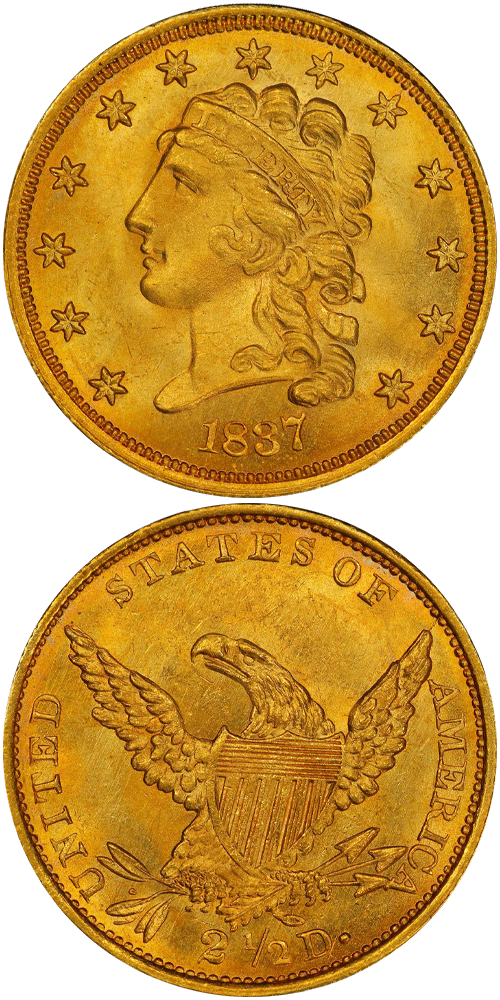1837 Classic Head Quarter Eagle
The 1837 quarter eagle represents an unappreciated first in American coinage history: the first American gold issue struck at the .900 standard of fineness that would persist even to the present day. Along with half eagles of this year, the quarter eagles of 1837 were struck to the specifications of the Mint Act of January 18, 1837, which spared the melting and refining department of the Mint the trouble of producing gold coins that were .899225 fine, the unusual fineness demanded by the Mint Act of 1834. The 1837 Mint legislation represented the largest wholesale change to United States coining regulations since the founding act of 1792, redefining roles inside the Mint, changing the weights of silver coins, and establishing a bullion fund that let the Mint better control the output of gold coins without being at the whims and mercy of its depositors. Though little known today, the Act of 1837 revolutionized the way the United States Mint conducted its business.
"The government ... decided in January 1837 to place the fineness of the coins, both gold and silver, upon the French basis - nine-tenths; consequently since that date the fineness of our gold coins has been 900 thousandths, the weight being the same as before." ?-- James Ross Snowden, A Description of Ancient and ?Modern Coins in the Cabinet Collection at the ?Mint of the United States, 1860.
The example to the left was sold by Stack's Bowers Galleries in the Daryl J. Haynor Virginian Collection, where it realized $72,000.






